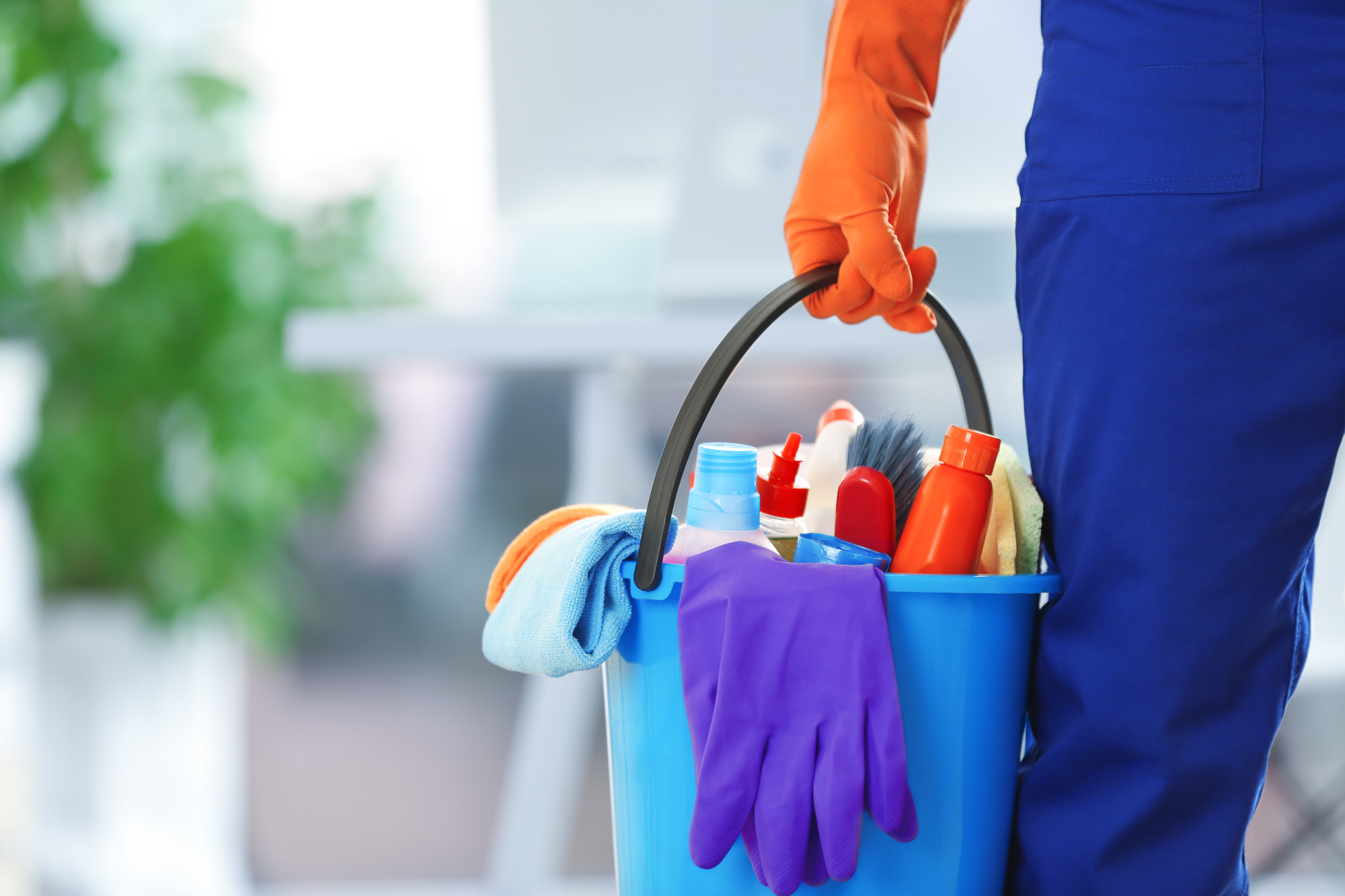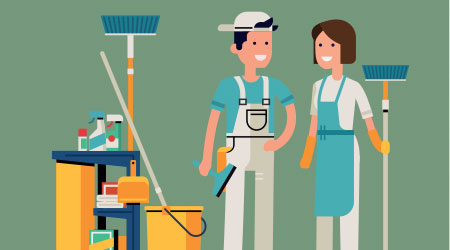Essential Tips for Everyday Cleaning: Just How to Defrosted and Cleaned Every Few Months for a Fresh Property
Essential Tips for Everyday Cleaning: Just How to Defrosted and Cleaned Every Few Months for a Fresh Property
Blog Article
Understanding the Demand for Thoroughly Sanitizing and Disinfecting Frequently Touched Surfaces in High-Traffic Locations
In the realm of public wellness and security, the thorough disinfection and sanitization of often touched surface areas in high-traffic areas stand as critical procedures in stopping the spread of damaging microorganisms. By checking out the various facets of surface area disinfection, from the risks linked with overlooking cleaning procedures to the reliable approaches that can be employed, a more clear understanding arises of the vital role these practices play in securing public health and wellness.
Relevance of Surface Sanitation
Highlighting the extensive sanitation of high-traffic surface areas is essential in maintaining a sanitary atmosphere and preventing the spread of unsafe virus. High-touch surfaces such as door handles, light buttons, lift switches, and counter tops work as reproducing grounds for infections and bacteria. Regular disinfection of these surfaces is essential to decrease the risk of contamination and transmission of diseases.
By applying a robust sanitation procedure, institutions and organizations can create a much safer setting for staff members, visitors, and consumers. Appropriate surface sanitation not just minimizes the spread of contagious conditions yet also imparts confidence in the cleanliness and safety of the properties. This proactive approach demonstrates a dedication to health and wellness and health, which is specifically vital in high-traffic areas where the probability of exposure to microorganisms is enhanced.
Additionally, surface area sanitation plays a crucial duty in general infection control techniques. Incorporated with hand hygiene techniques, wearing masks, and keeping physical distancing, thorough sanitation of high-touch surfaces develops a comprehensive protection versus the transmission of dangerous microbes. Focusing on surface area disinfection is a necessary element of an alternative technique to health and wellness in shared spaces.
Risks of Neglecting Cleansing Practices
Disregarding complete sanitation of high-traffic surfaces significantly heightens the risk of viral and microbial contamination, presenting a major danger to the health and safety of people frequenting these spaces. Failing to carry out proper cleansing methods can result in the accumulation and spread of unsafe virus, including microorganisms and infections, on regularly touched surface areas such as doorknobs, hand rails, elevator buttons, and kitchen counters.

In addition, overlooking the significance of comprehensive cleansing not only compromises the health of individuals yet likewise weakens efforts to keep a sanitary and clean environment. It is critical to acknowledge the value of appropriate disinfection procedures in avoiding the spread of infections and protecting public health.
Effective Sanitation Methods
To maintain ideal sanitation and minimize the danger of contamination on high-traffic surfaces, employing efficient disinfection techniques is essential. One of the most efficient and typical sanitation techniques is making use of chemical anti-bacterials.
An additional reliable technique is making use of UV-C light. UV-C light has been shown to be effective in killing a vast selection of microbes by disrupting their DNA structure, thus stopping them from duplicating. It is crucial to make use of UV-C light appropriately, making sure that the proper intensity and exposure time are used to attain the preferred sanitation outcomes.
Furthermore, using heavy steam cleansing as a disinfection method can be very effective, especially on surface areas that are heat-resistant. Heavy steam can penetrate porous surfaces and kill germs, infections, and other microorganisms efficiently. When using heavy steam cleansing, it is necessary to make sure that the surface area gets to the called for temperature level for an enough amount of time to ensure appropriate disinfection.
Effect On Public Health
The maintenance of high criteria of sanitation and disinfection on high-traffic surfaces plays a critical duty in protecting public health. Regularly touched surfaces in areas with high footfall, such as doorknobs, hand rails, elevator switches, and bathroom centers, offer as breeding grounds for dangerous microorganisms. Stopping working to effectively disinfect these surfaces can result in the fast spread of contagious illness within communities. By carrying out thorough sanitation protocols, the threat of transmission of viruses, germs, and other bacteria can be dramatically decreased.
Effective sanitation practices not just protect individuals from dropping ill but also add to the overall well-being of society. Public health and wellness authorities emphasize the significance of keeping clean settings to avoid break outs and have the spread of diseases. In high-traffic areas like airports, colleges, healthcare facilities, and public transport systems, the impact of extensive disinfection measures can not be underrated. Prioritizing the sanitization of regularly touched surfaces is a positive approach to advertising public health and improving the security of individuals in shared spaces.
Executing Normal Cleaning Procedures
Without delay setting up and adhering to a constant timetable of cleansing procedures is paramount for maintaining the sanitation and safety of high-traffic surface areas. Routine cleaning protocols are crucial in stopping the build-up of germs and microorganisms on regularly touched surface areas, especially in locations with high foot website traffic. By executing an organized strategy to cleansing, organizations can properly decrease the risk of disease transmission and develop a much healthier environment for workers, consumers, and linked here the public.
To develop an efficient cleansing routine, it is vital to recognize high-traffic areas that call for frequent interest. These locations might include doorknobs, hand rails, lift buttons, washroom facilities, and common equipment. Carrying out a routine cleansing program that targets these surfaces multiple times a day can considerably reduce the spread of unsafe bacteria and infections.
Additionally, using ideal cleaner and anti-bacterials is essential to making sure that surfaces are thoroughly sterilized. Routine Web Site training of cleaning team on correct cleaning strategies and the value of adherence to the cleaning schedule is also essential in preserving a sanitary atmosphere. By focusing on regular cleansing methods, organizations can advertise the wellness and well-being of people that interact with these high-traffic surfaces.

Final Thought
In verdict, it is vital to prioritize comprehensive sanitation and sanitization of frequently touched surfaces in high-traffic areas to avoid the spread of dangerous pathogens and keep public health and wellness. Overlooking proper cleansing techniques can raise the threat of contamination and transmission of conditions. By implementing regular cleansing procedures and utilizing reliable disinfection methods, we can create a more secure setting for everyone (Everyday cleaning). It is vital to recognize the value of maintaining clean surfaces in high-traffic areas to make certain the well-being of the neighborhood.
In the realm of public wellness and safety, the thorough disinfection and sanitization of frequently touched surface areas in high-traffic areas stand as extremely important actions in stopping the spread of unsafe virus. By exploring the different elements of surface area sanitation, from the dangers associated with neglecting cleansing methods to the efficient approaches that can be utilized, a clearer understanding emerges of the important function these methods play in protecting public health and wellness.Additionally, using steam cleansing as a disinfection method can be very reliable, especially on surfaces that are heat-resistant. When making use of vapor cleaning, it is crucial to guarantee that the surface gets to the called for temperature for an enough quantity of time to guarantee correct disinfection.
In final thought, it is vital to focus on thorough sanitation and sanitization of often informative post touched surfaces in high-traffic locations to avoid the spread of unsafe pathogens and keep public wellness.
Report this page